



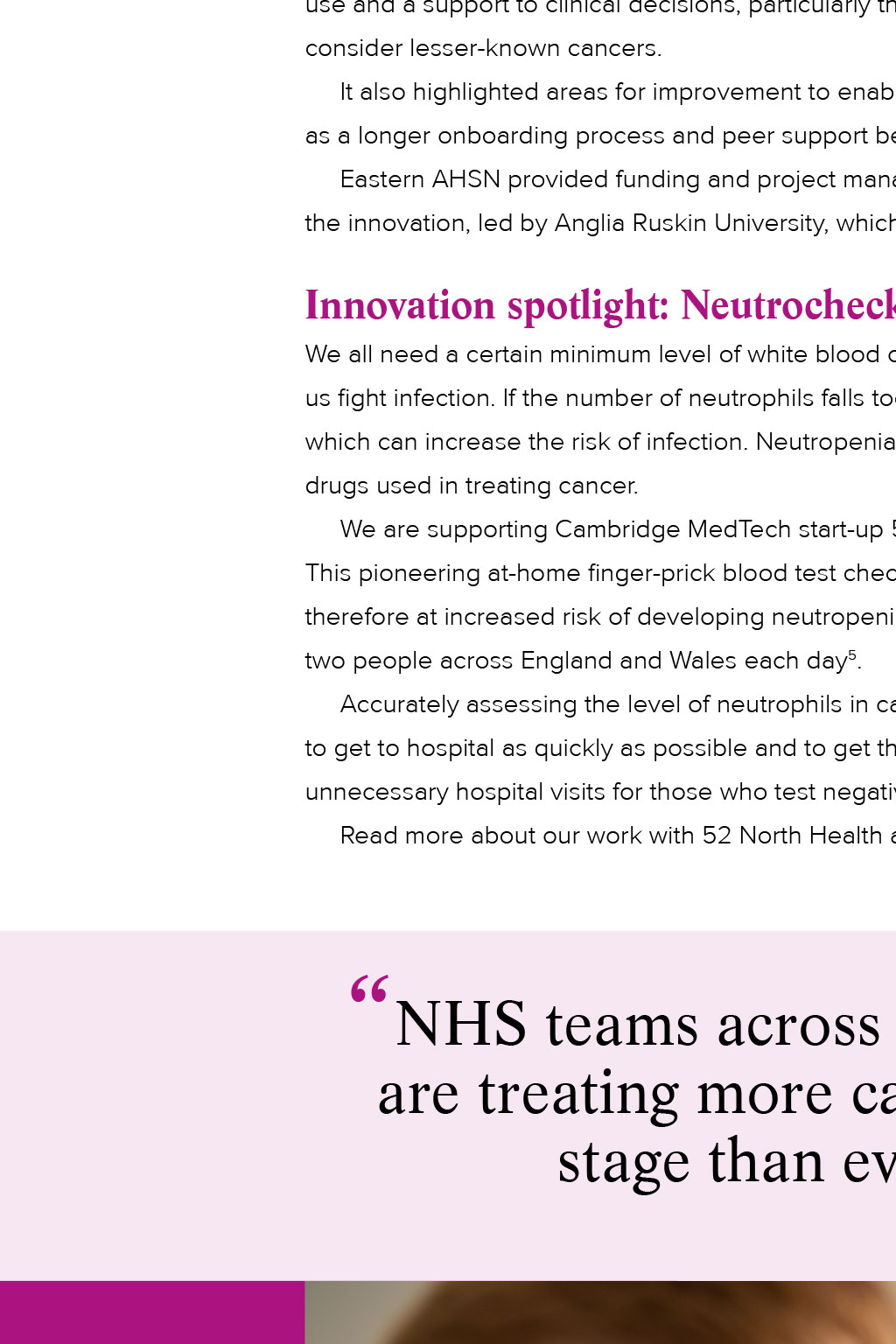
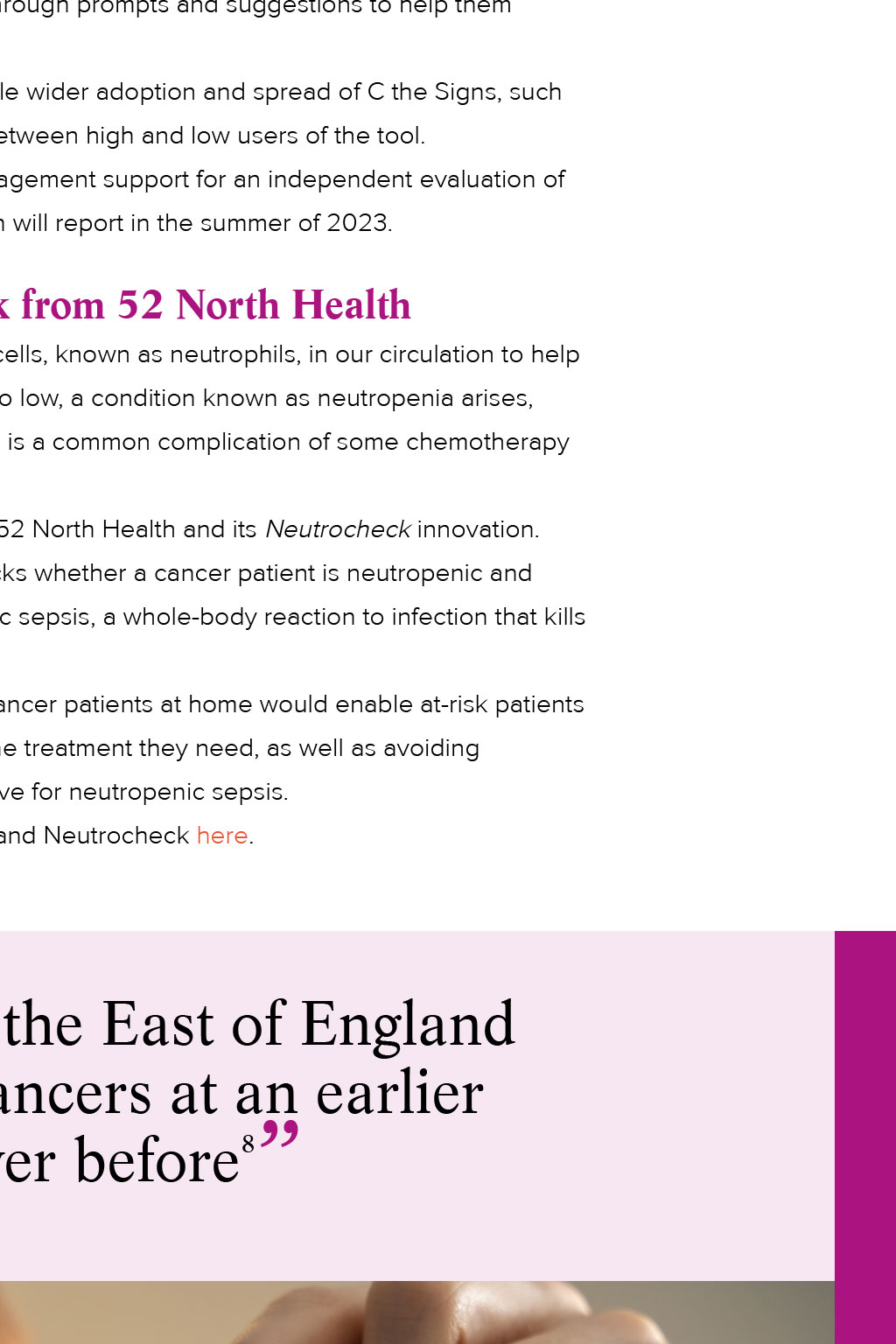
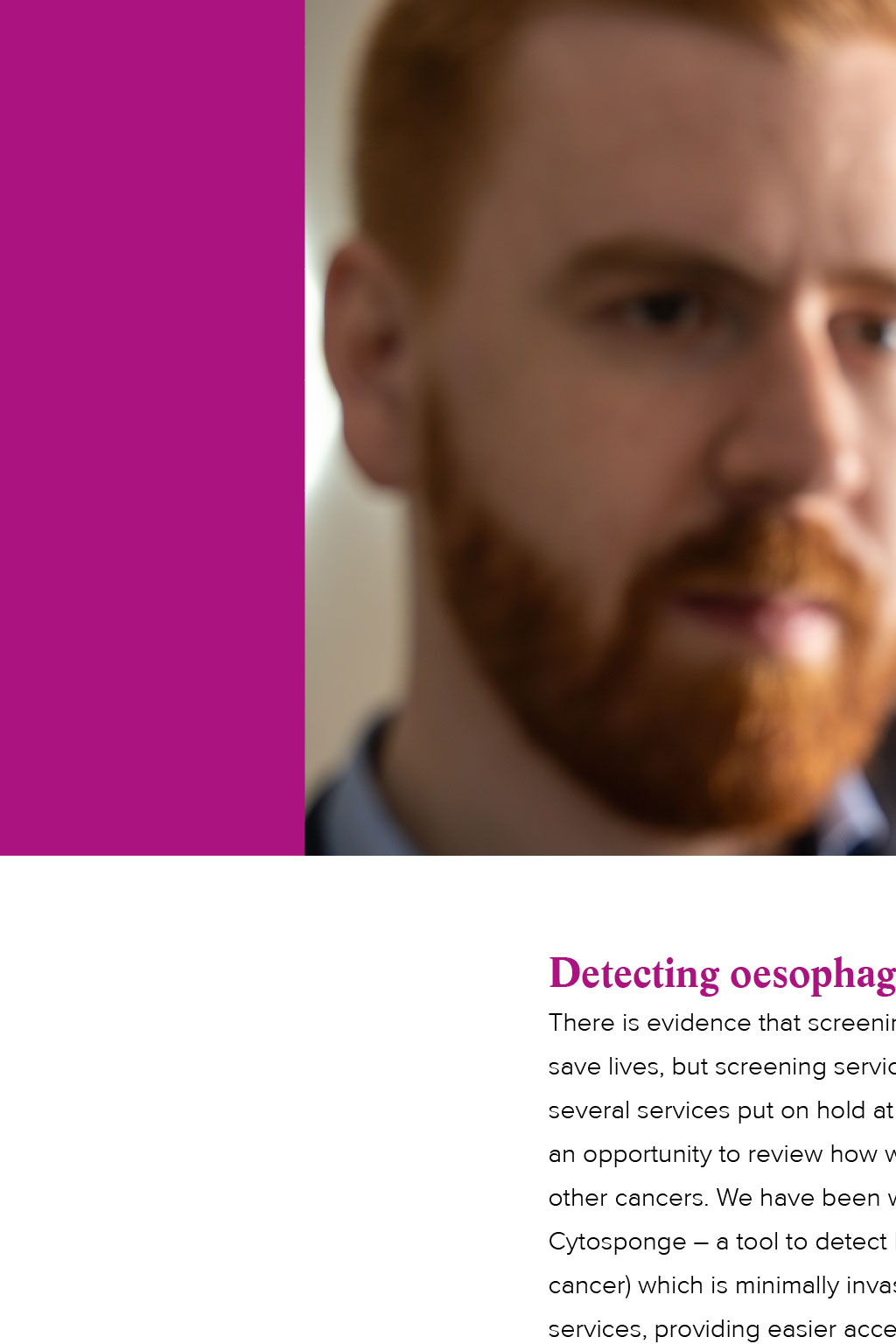
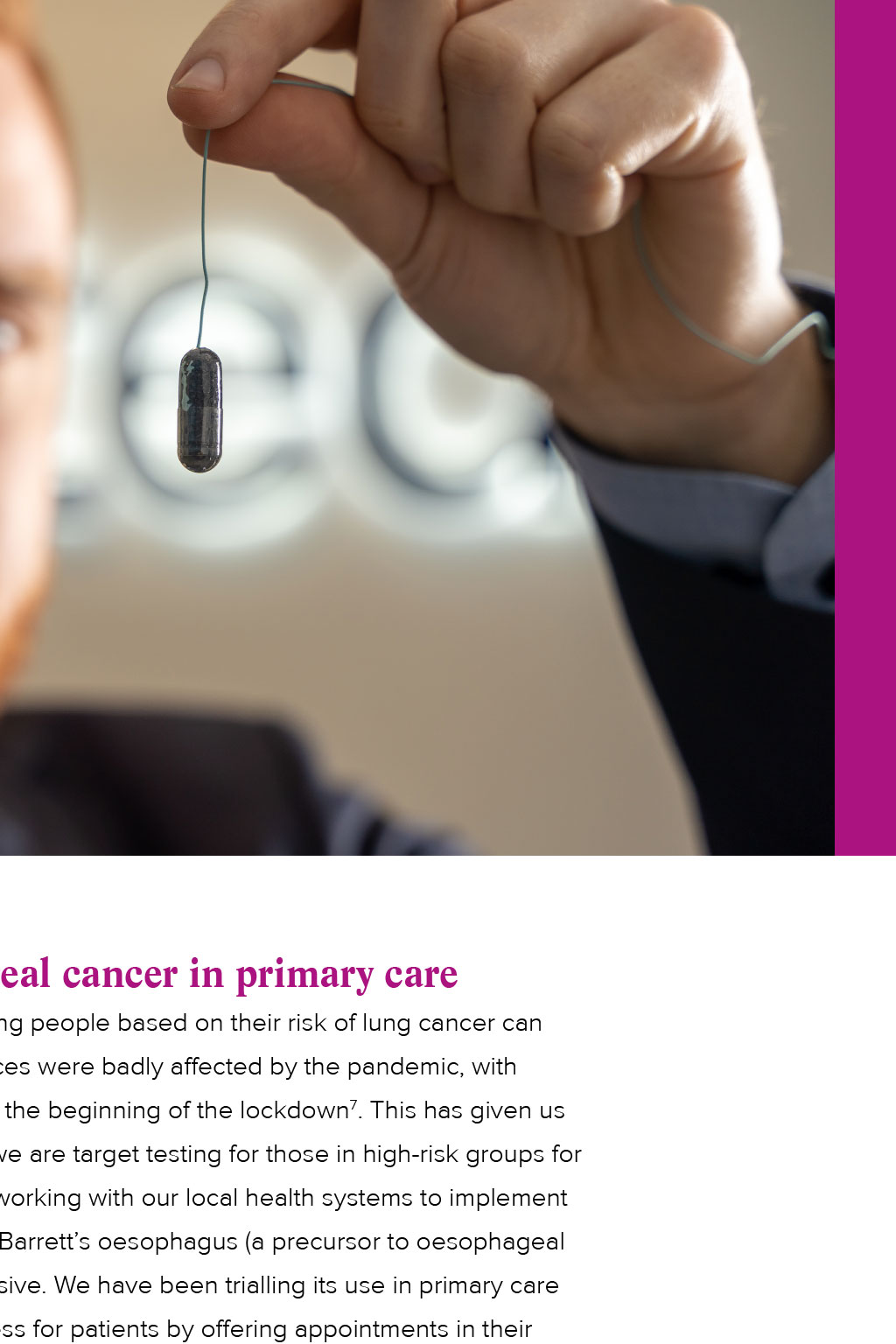
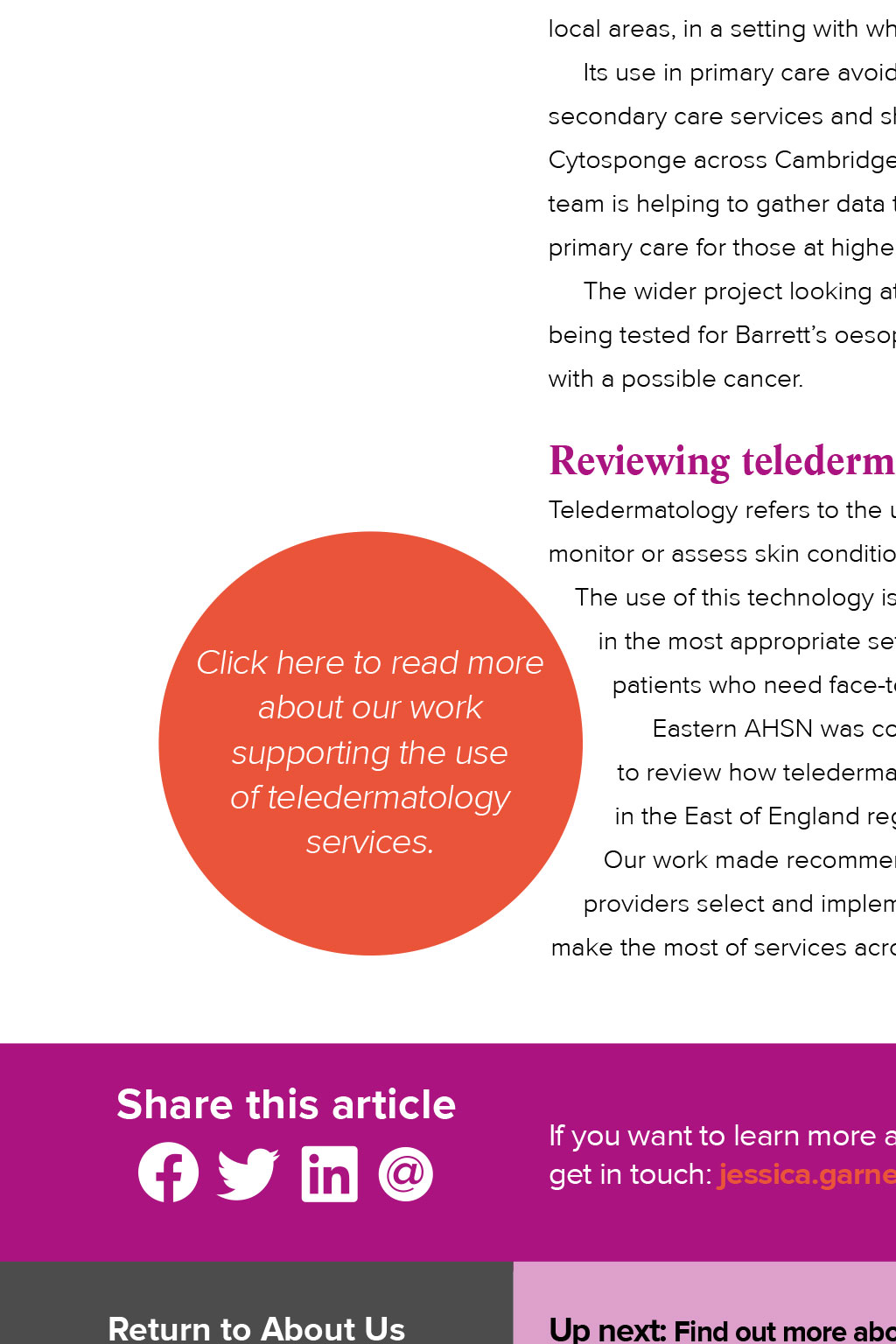
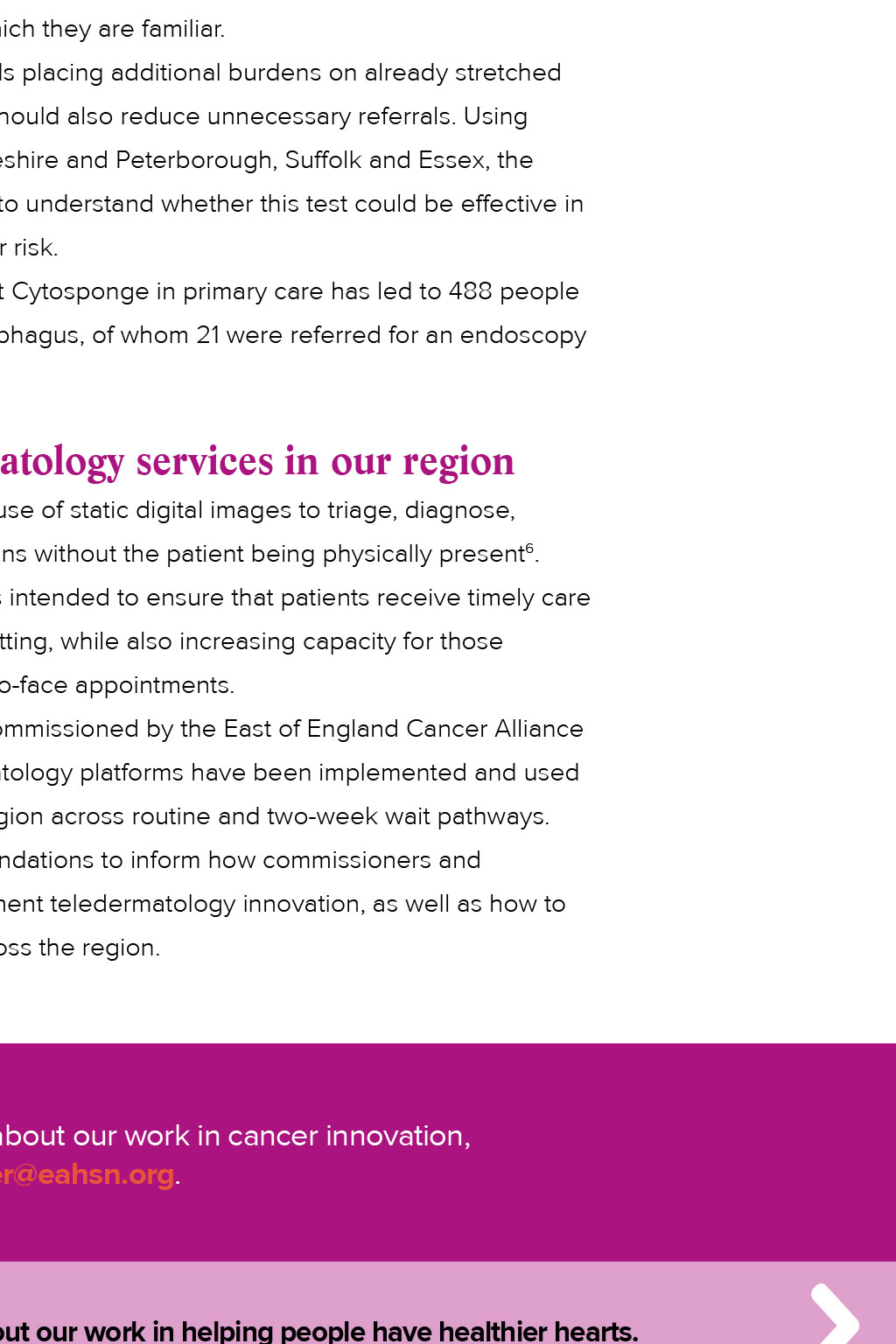
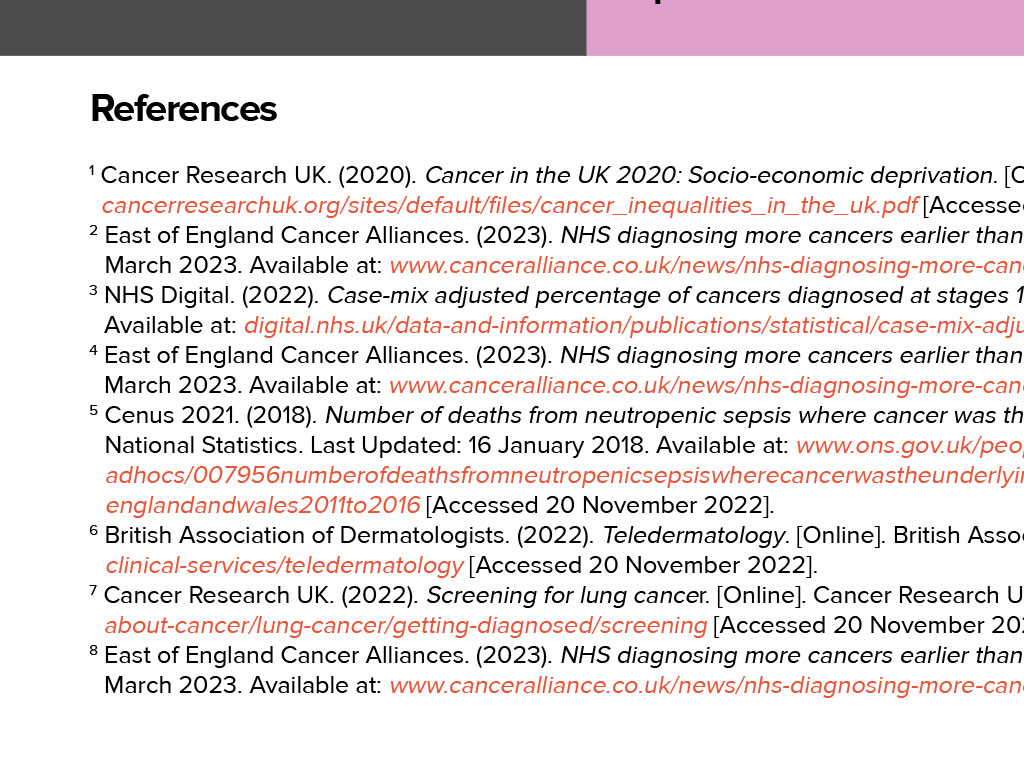
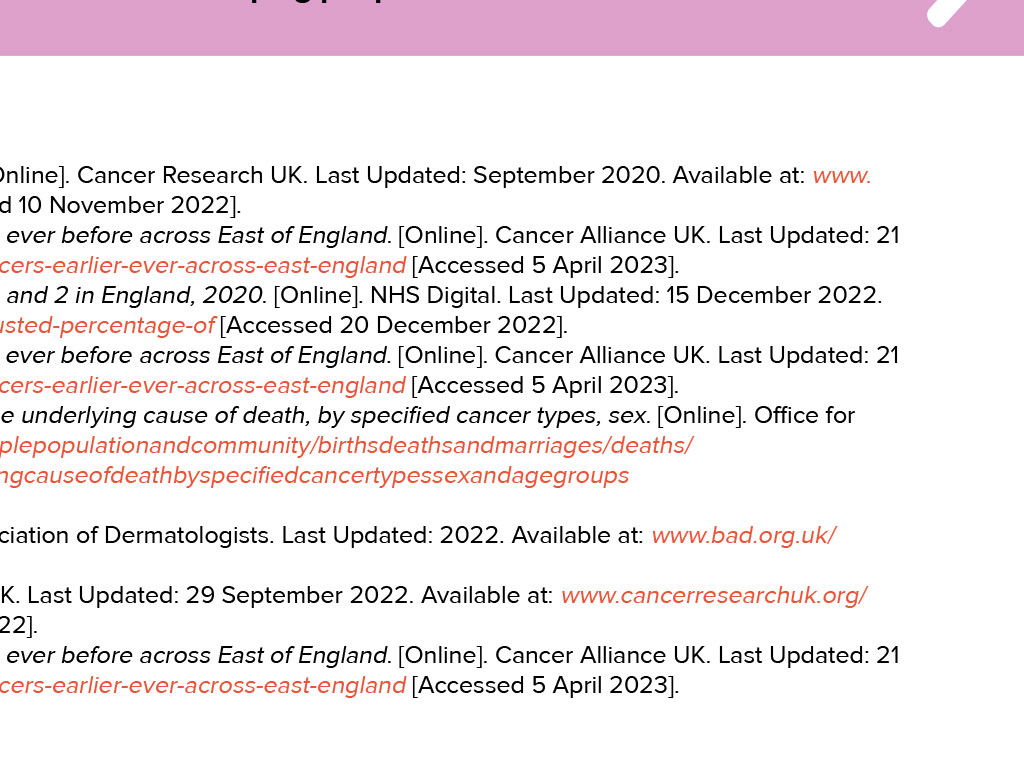













Reducing inequalities: cancer Jag Ahluwalia, Chief Clinical Officer at Eastern AHSN, explains how innovation is helping cancer services improve outcomes and reduce inequalities in life expectancy. Cancer is one of the biggest contributors to inequalities in life expectancy1. Earlier cancer diagnosis is one of the five clinical areas of focus targeted within NHS Englands Core20PLUS5 programme with an ambition that 75% of cancer cases will be diagnosed at stage 1 or 2 by 2028. In the East of England, this equates to an additional 5,570 people a year2. Data shows that fewer cancers are diagnosed at early stages in areas with higher deprivation, which contributes towards a lower life expectancy3. In recent years, the NHS has been working hard to meet the adverse effects of the COVID-19 pandemic on cancer diagnosis, with the latest available data showing that 60% of cancers were diagnosed at stage 1 or 2 in 2022 in the East of England the highest number ever4. This welcome focus on earlier cancer diagnosis continues to be a priority for Eastern AHSN, where we are looking at how we can support this through innovation across multiple programmes. Supporting clinicians with cancer diagnosis Eastern AHSN supported the implementation of C the Signs across 35 GP practices in Ipswich and East Suffolk. C the Signs is an integrated clinical decision support tool that helps healthcare professionals find cancer at the earliest, most curable stage. It uses AI to support GPs with riskassessing patients by checking combinations of signs, symptoms and risk factors, and will then suggest an appropriate diagnostic pathway supporting GPs to make suspected cancer referrals. Across the 35 practices, there were 303 registered users in February 2023, with 60% in clinical roles and 40% in administrative roles. The evaluation found that staff rated the tool as highly effective, easy-touse and a support to clinical decisions, particularly through prompts and suggestions to help them consider lesser-known cancers. It also highlighted areas for improvement to enable wider adoption and spread of C the Signs, such as a longer onboarding process and peer support between high and low users of the tool. Eastern AHSN provided funding and project management support for an independent evaluation of the innovation, led by Anglia Ruskin University, which will report in the summer of 2023. Innovation spotlight: Neutrocheck from 52 North Health We all need a certain minimum level of white blood cells, known as neutrophils, in our circulation to help us fight infection. If the number of neutrophils falls too low, a condition known as neutropenia arises, which can increase the risk of infection. Neutropenia is a common complication of some chemotherapy drugs used in treating cancer. We are supporting Cambridge MedTech start-up 52 North Health and its Neutrocheck innovation. This pioneering at-home finger-prick blood test checks whether a cancer patient is neutropenic and therefore at increased risk of developing neutropenic sepsis, a whole-body reaction to infection that kills two people across England and Wales each day5. Accurately assessing the level of neutrophils in cancer patients at home would enable at-risk patients to get to hospital as quickly as possible and to get the treatment they need, as well as avoiding unnecessary hospital visits for those who test negative for neutropenic sepsis. Read more about our work with 52 North Health and Neutrocheck here. NHS teams across the East of England are treating more cancers at an earlier stage than ever before 8 Detecting oesophageal cancer in primary care There is evidence that screening people based on their risk of lung cancer can save lives, but screening services were badly affected by the pandemic, with several services put on hold at the beginning of the lockdown7. This has given us an opportunity to review how we are target testing for those in high-risk groups for other cancers. We have been working with our local health systems to implement Cytosponge a tool to detect Barretts oesophagus (a precursor to oesophageal cancer) which is minimally invasive. We have been trialling its use in primary care services, providing easier access for patients by offering appointments in their local areas, in a setting with which they are familiar. Its use in primary care avoids placing additional burdens on already stretched secondary care services and should also reduce unnecessary referrals. Using Cytosponge across Cambridgeshire and Peterborough, Suffolk and Essex, the team is helping to gather data to understand whether this test could be effective in primary care for those at higher risk. The wider project looking at Cytosponge in primary care has led to 488 people being tested for Barretts oesophagus, of whom 21 were referred for an endoscopy with a possible cancer. Reviewing teledermatology services in our region Teledermatology refers to the use of static digital images to triage, diagnose, monitor or assess skin conditions without the patient being physically present6. The use of this technology is intended to ensure that patients receive timely care Click here to read more about our work supporting the use of teledermatology services. in the most appropriate setting, while also increasing capacity for those patients who need face-to-face appointments. Eastern AHSN was commissioned by the East of England Cancer Alliance to review how teledermatology platforms have been implemented and used in the East of England region across routine and two-week wait pathways. Our work made recommendations to inform how commissioners and providers select and implement teledermatology innovation, as well as how to make the most of services across the region. Share this article Return to About Us If you want to learn more about our work in cancer innovation, get in touch; jessica@garner@eahsn.org. Up next: Find out more about our work in helping people have healthier hearts. References Cancer Research UK. (2020). Cancer in the UK 2020: Socio-economic deprivation. [Online]. Cancer Research UK. Last Updated: September 2020. Available at: www. cancerresearchuk.org/sites/default/files/cancer_inequalities_in_the_uk.pdf [Accessed 10 November 2022]. 2 East of England Cancer Alliances. (2023). NHS diagnosing more cancers earlier than ever before across East of England. [Online]. Cancer Alliance UK. Last Updated: 21 March 2023. Available at: www.canceralliance.co.uk/news/nhs-diagnosing-more-cancers-earlier-ever-across-east-england [Accessed 5 April 2023]. 3 NHS Digital. (2022). Case-mix adjusted percentage of cancers diagnosed at stages 1 and 2 in England, 2020. [Online]. NHS Digital. Last Updated: 15 December 2022. Available at: digital.nhs.uk/data-and-information/publications/statistical/case-mix-adjusted-percentage-of [Accessed 20 December 2022]. 4 East of England Cancer Alliances. (2023). NHS diagnosing more cancers earlier than ever before across East of England. [Online]. Cancer Alliance UK. Last Updated: 21 March 2023. Available at: www.canceralliance.co.uk/news/nhs-diagnosing-more-cancers-earlier-ever-across-east-england [Accessed 5 April 2023]. 5 Cenus 2021. (2018). Number of deaths from neutropenic sepsis where cancer was the underlying cause of death, by specified cancer types, sex. [Online]. Office for National Statistics. Last Updated: 16 January 2018. Available at: www.ons.gov.uk/peoplepopulationandcommunity/birthsdeathsandmarriages/deaths/ 1